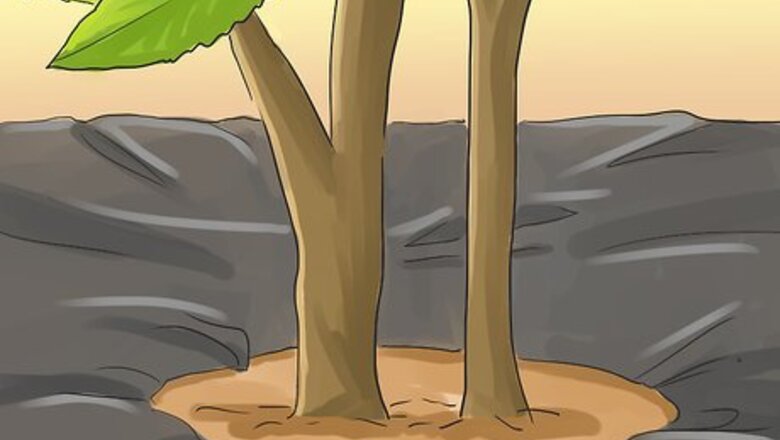
views
Tilling the Soil

Cover the area around the plant. Place a covering around the area in which you plan to remove the blackberry plant. This can make clean up easier and minimize the risk of seeds or stems escaping and forming new plants. Use trash bags or tarps to cover the area to till.

Cut the stems. Using your hands or a pair of heavy-duty garden scissors to cut the stems of the blackberry plant. This will make it easier for you to remove the roots and source of life for the plant.
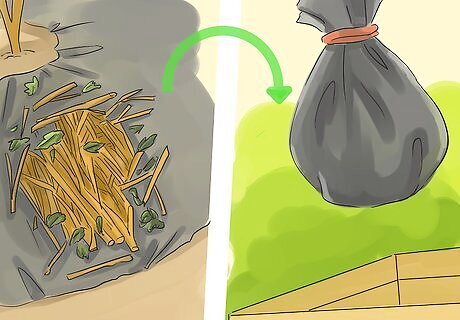
Bundle the stems for disposal. Using the covering you used around the blackberry bush, bundle the stems together. Then dispose of the stems in your garbage or a place in which they are not exposed to the soil to prevent regrowth. Make sure to get every bit of stem off of the ground because a new bush can still grow even from a short cutting. Check with your community to inquire about local regulations on disposing of organic plant material.
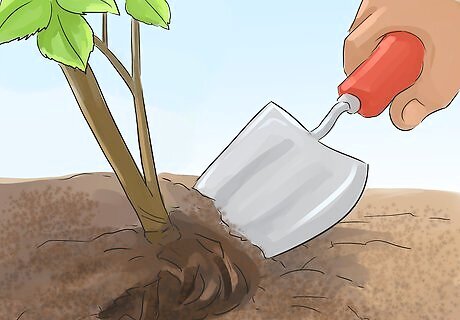
Dig up the root ball. Once you’ve removed the stems, you can more easily access the root ball. Using a trowel or shovel, dig the surrounding soil until you expose the entire root ball. Make sure to dig around the root ball so that you don’t break it up and potentially release seeds or stems into the soil. Be aware that digging up the root ball will not kill the plant since some plant material may remain, but this does make tilling the soil much easier.

Remove the root ball. Gently take the root ball out from the soil around which you’ve dug a hole. Not only can this ensure easier tilling, but can also remove a major source of rhizomes that can propagate the bush. However, keep in mind that blackberry plants do not form a tight root ball like some other plants and the roots can run a long way underground. Follow the roots to the ends and then carefully dig them up with a trowel. Use gloves when you remove the root ball to minimize the risk of cutting yourself. Dig further around the root ball if it doesn’t come out when you pull on it. This may allow you to get most bits of root in one movement. Dispose of the root ball in the same way you did the stems.

Till the soil. It’s important to till, or break up and turn over, the soil after removing the stems and root balls. This can help remove or starve any material, including rhizomes, which are also called rootstocks, that can propagate further plants. Use a cultivator fork or deep spade to turn over and break up soil in small areas. You can purchase these at most home improvement and hardware stores. Rent an engine-powered tiller for larger areas. You can rent (or buy) these at home improvement and hardware stores. Be sure that you’ve broken up and turned over your soil by examining it. The soil will often look darker if it’s come from under the surface. If you do not want to till the soil, then you can also just mow over any shoots that do come up. This will weaken the plants and stop the shoots from coming up.
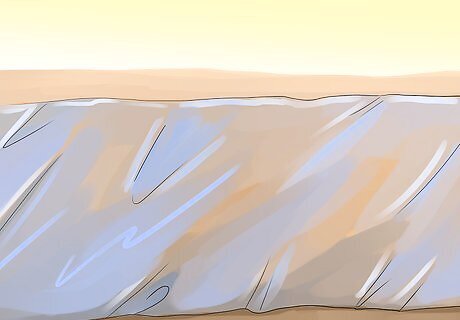
Cover the soil. Use a heavy layer of plastic to cover the soil and minimize the risk of more blackberries growing. Then cover the plastic with 4-5 inches of mulch to further deter growth.
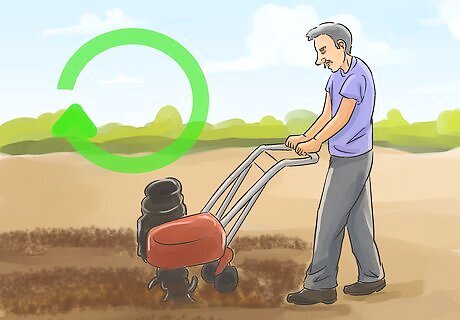
Repeat tilling. Follow up your removal and tilling with frequent care of your soil. Repeating your tilling efforts can minimize the number of plantlets and eventually kill all of your blackberries. Till once a week or any time you see plantlets. Eventually, the blackberry plants will die.
Employing Herbicides
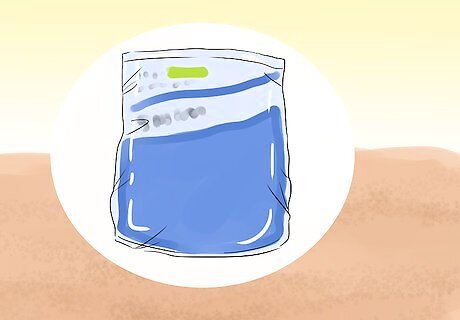
Place an herbicide in the soil. In areas not used to grow other crops, you can apply tebuthiuron (Spike) to your soil. This can kill blackberry bushes, but may also harm other surrounding vegetation. Place tebuthiuron pellets to the base of blackberry plants to control their growth long-term. Be aware that tebuthiuron is toxic not only to vegetation, but can also be to mammals, too. It is also water soluble, so it can easily contaminate ground water. Wear protective clothing when you apply tebuthiuron to minimize your exposure to the pesticide. Make sure to check and see if it is legal to use tebuthiuron where you live. It has been banned in Europe since 2002 because if its toxicity.

Apply an herbicide directly on the plant. One of the most effective ways to kill blackberries is by applying an herbicide directly to the plant while it is actively growing. This allows it to get into the plant’s structure and kill rhizomes, thus deterring regrowth. Use foliar-based herbicides, which you apply to the part of the plant visible above the ground, in early summer or at the start of the growing season when their tissue is rapidly expanding. Spray herbicides such as glyphosate, dicamba, or triclopyr on the blackberry bush. You can purchase these at many home improvement and hardware stores. Be careful when mixing and applying these chemicals because they can kill other plants. Make sure to avoid contact with your skin as well.
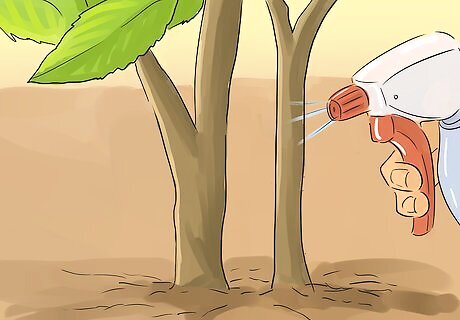
Treat the basal bark. Since the bark at the base of the bush helps transport the nutrients needed for the plant to survive, treat it with an herbicide. This can help kill the bush at any time of year and also minimize contact with chemicals. Use a concentrated form of triclopyr to treat the basal bark. Spray the solution directly at base of the bush directly on the bark. Cover about 6-12 inches of the basal bark with spray, depending on how large the plant is. Make sure to not oversaturate the bark with the solution, which can cause toxic runoff.
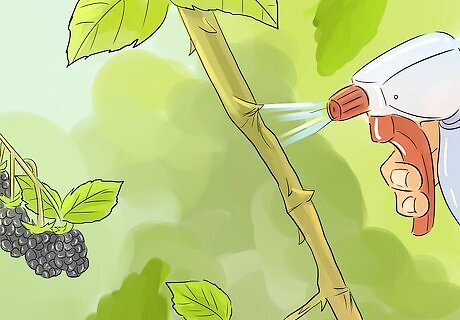
Spray the dormant stems and leaves. An alternative way to administer triclopyr is to spray the dormant stems and leaves of your blackberry bush. This can also kill the plant while minimizing your contact with the chemical. Use this solution only in the fall and winter when the plant stem and leaves are dormant. Spray the plant until it is thoroughly wet, again avoiding oversaturation that can cause toxic runoff.

Hire a landscape professional. If your blackberry bush growth is especially pernicious, consider hiring a landscape professional. He can help you assess and deal with the problem without killing off all of your other vegetation. Discuss your concerns with the landscaper and ask about how to manage the situation more effectively after his treatment. The Landscape Contractors Association can help you find a qualified landscape professional in your local area.










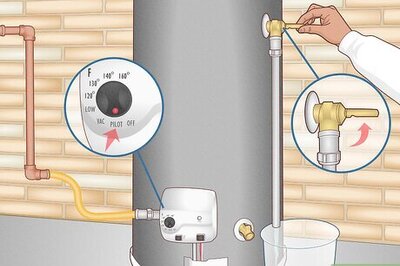





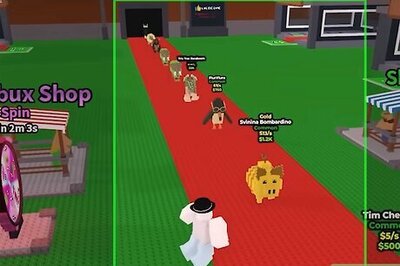
Comments
0 comment